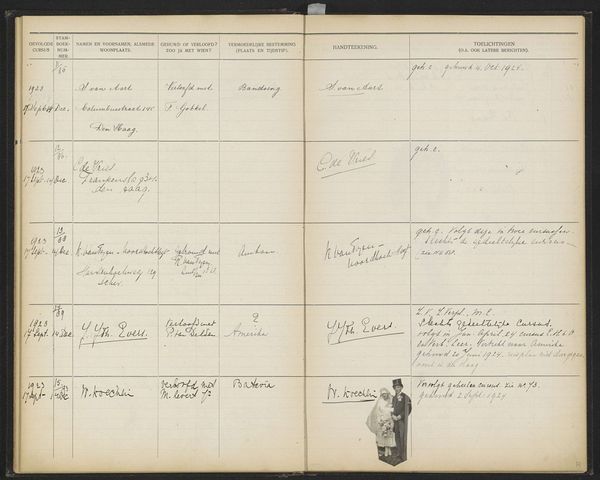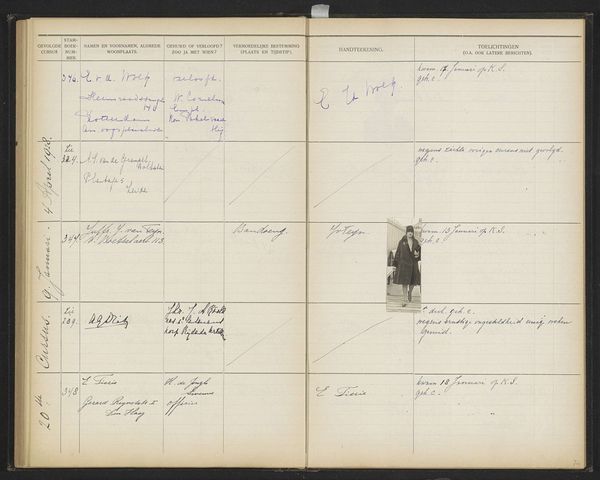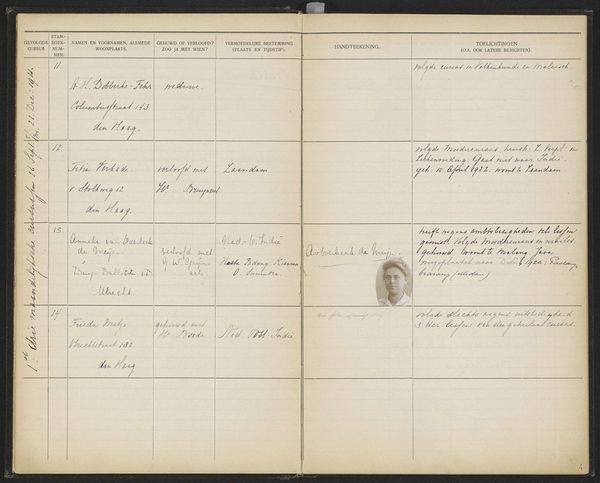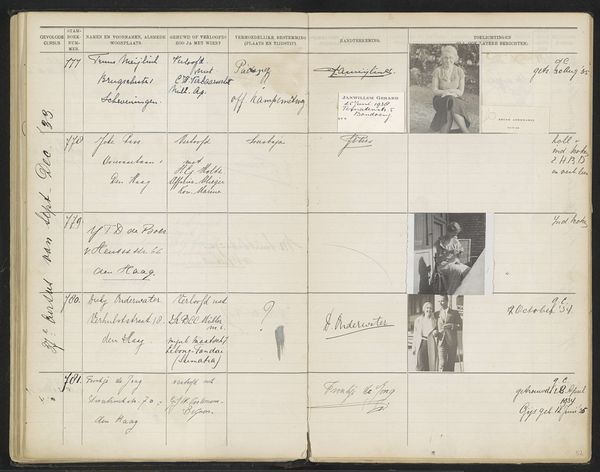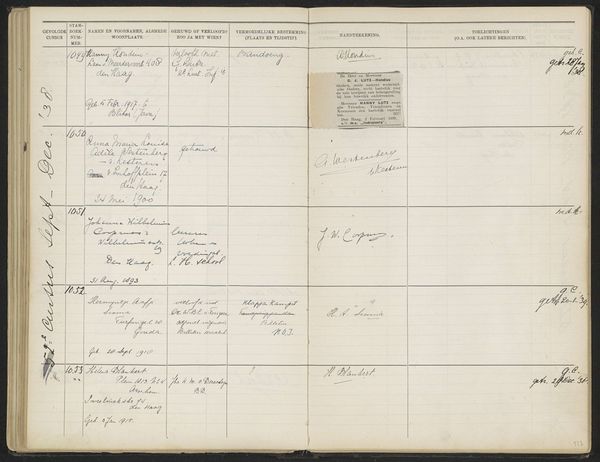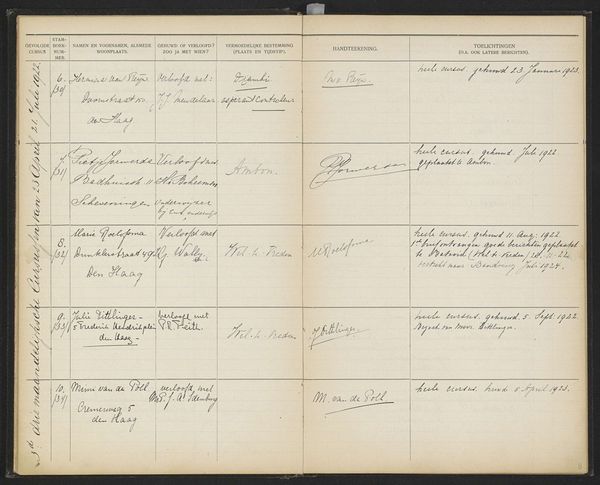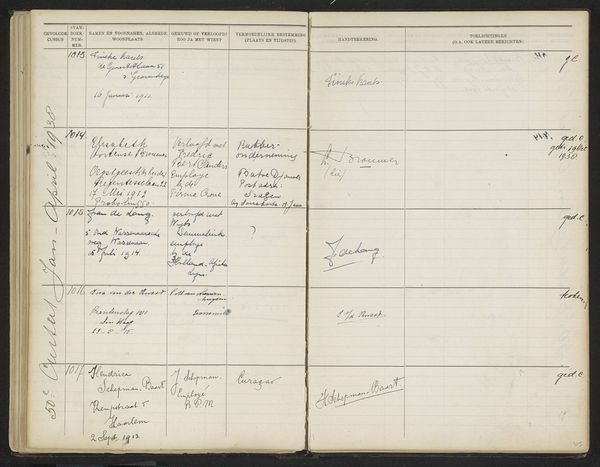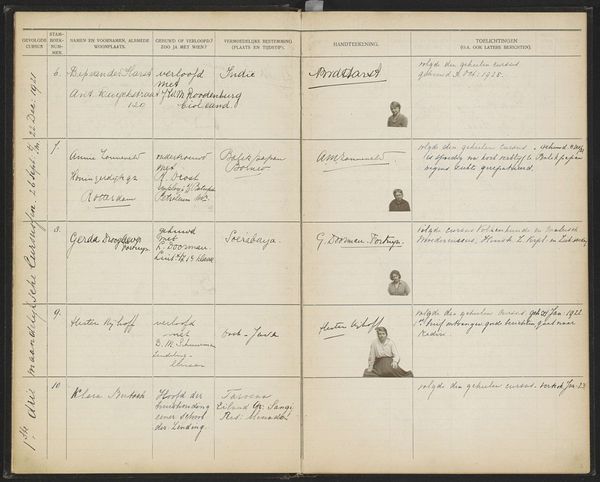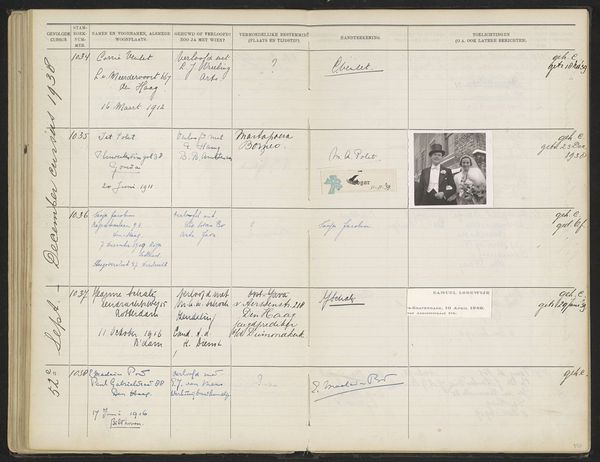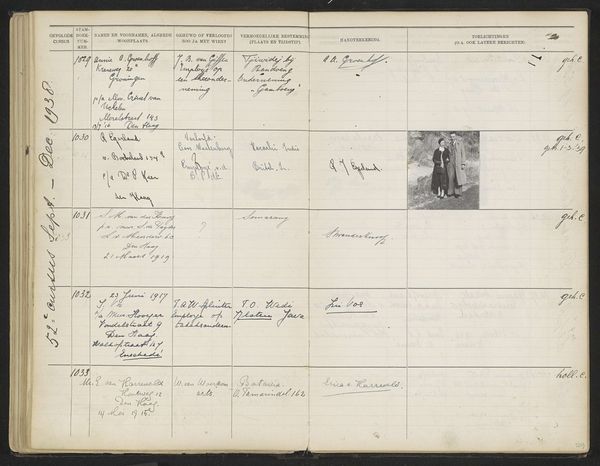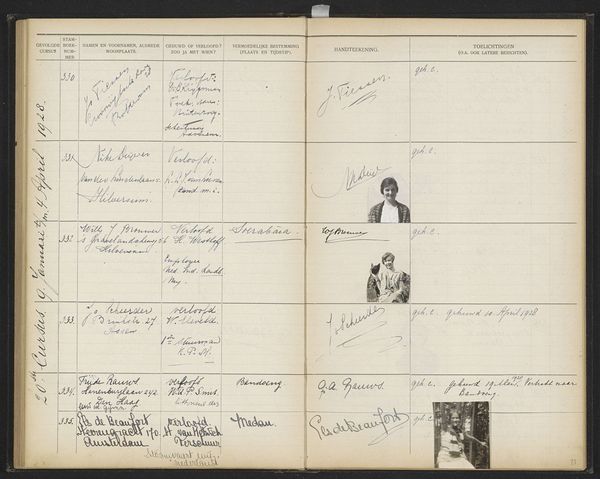
Blad 44 uit Stamboek van de leerlingen der Koloniale School voor Meisjes en Vrouwen te 's-Gravenhage deel I (1921-1929) Possibly 1926 - 1929
0:00
0:00
drawing, mixed-media, print, paper, photography, ink
#
portrait
#
drawing
#
mixed-media
#
medieval
# print
#
paper
#
photography
#
ink
#
academic-art
#
realism
Dimensions: height 340 mm, width 440 mm
Copyright: Rijks Museum: Open Domain
Editor: This document, "Blad 44 uit Stamboek van de leerlingen der Koloniale School voor Meisjes en Vrouwen te 's-Gravenhage deel I (1921-1929)," is a fascinating find. It looks like a page from a school register, probably from the late 1920s, using ink, print, mixed media, and even photographs pasted in. I find myself curious about the lives documented here. What stands out to you about this piece? Curator: What interests me immediately is the labor evident in its creation. We have handwriting, photographic processes, printing techniques all colliding on one page. The register itself is a manufactured object, paper produced industrially. Each entry represents someone’s labor, recording details. Consider the 'Koloniale School' itself. Its existence reveals much about the Netherlands' colonial past and its administration. The women listed attended this school—what skills were they meant to acquire? How does their training then influence and impact Dutch colonial pursuits abroad? Editor: So you're looking at the material construction and its connections to labor and social function. That colonial school detail is something I hadn't fully grasped. Do the various handwriting styles and photo quality perhaps indicate differences in social status or the resources available to the students and their families? Curator: Exactly. The varying photographic quality might reflect access to resources or even the evolving state of photographic technology at the time, both revealing the nature of consumption within different layers of Dutch society, and those students related to it. The register, with its meticulous record-keeping, presents an image of control, but the very act of assembling this information involved numerous hands. Each photograph carefully mounted, represents small, meticulous actions. Can we ignore the broader network that is involved? Editor: I see now how looking closely at the materials and the context can open up questions about social structure and labor. Thanks for broadening my perspective. Curator: And thank you for directing my attention to details of material use and layout within the document! Considering manufacture, labour, consumption within this piece brings new meaning to it.
Comments
No comments
Be the first to comment and join the conversation on the ultimate creative platform.
